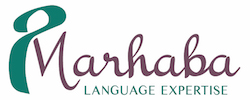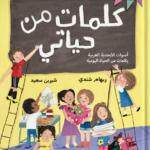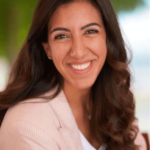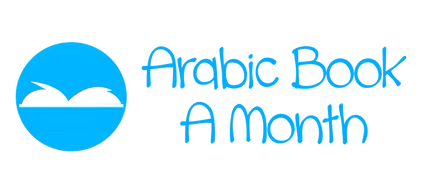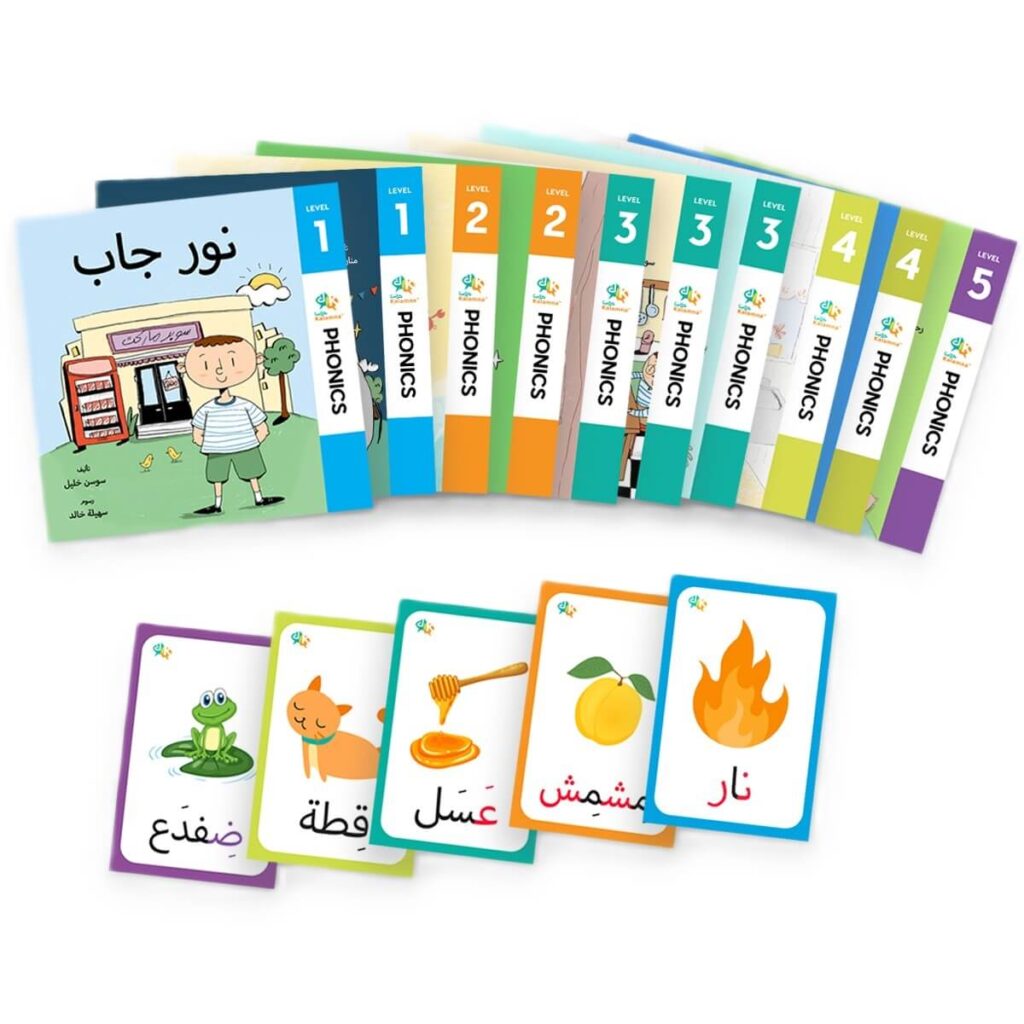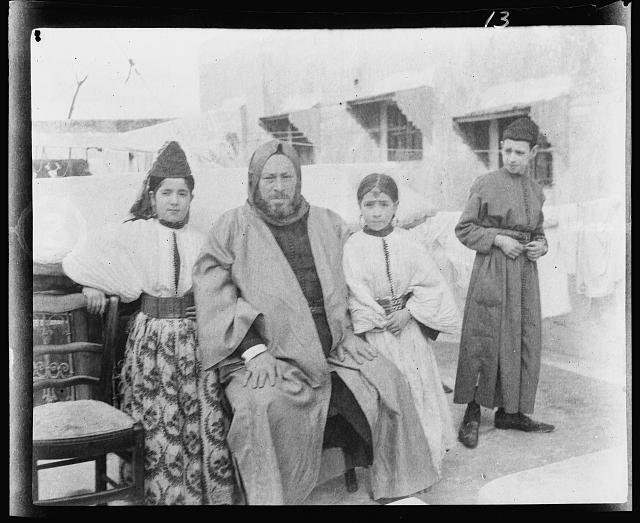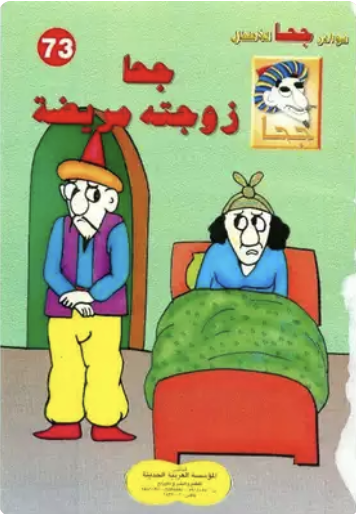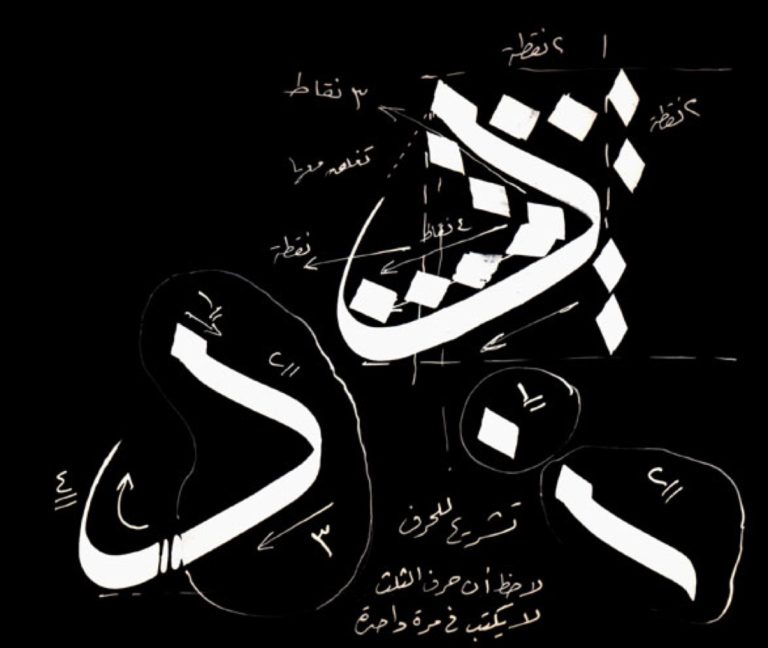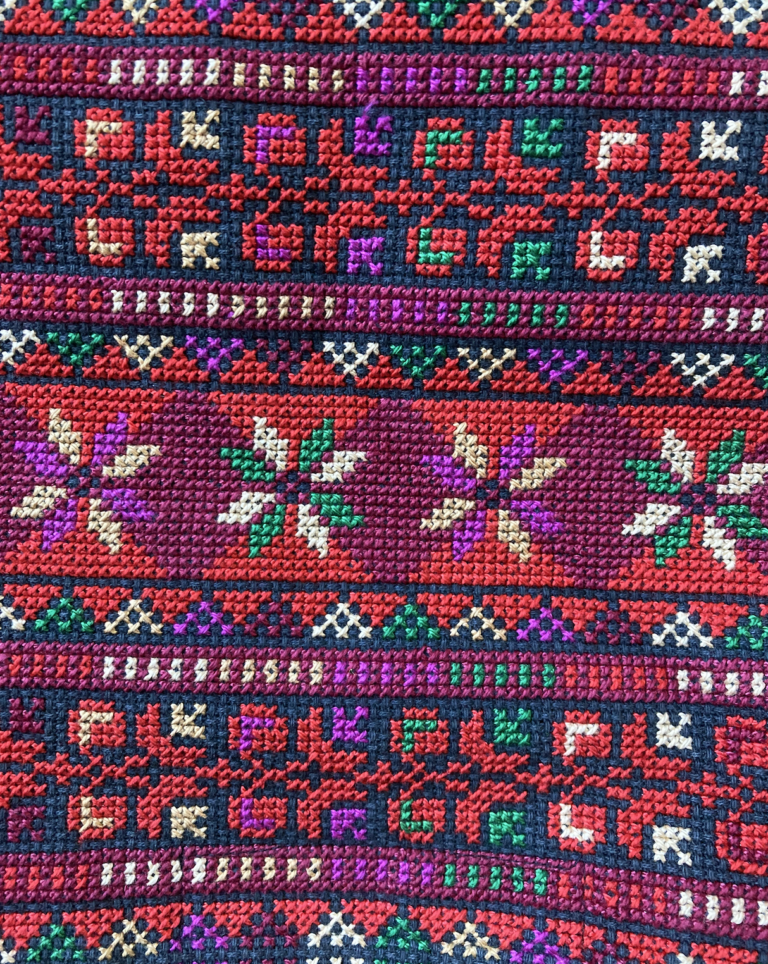Kids’ Books in Arabic
In this post, I want to bring together information and resources regarding children’s literature in Arabic. The primary impetus for this post is to inform and assist librarians and teachers, in public libraries and schools, particularly in the United States, who want to purchase and provide books in Arabic for kids and their families.
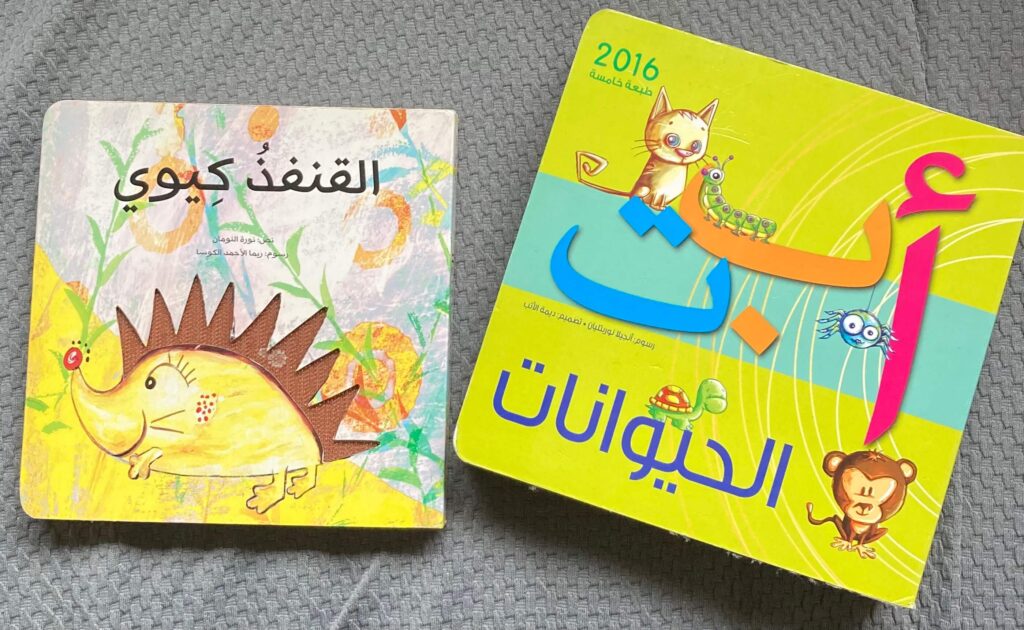
Context
First, we need to introduce one key linguistic concept: diglossia. Diglossia refers to the existence of multiple levels of language usage within any given language. In English, in the United States today, we have some variety. For example, the words a college student uses to speak to a professor likely vary, to some degree, from the words the student would use to speak with a peer. Similarly, one might pick words more carefully when speaking with a police officer, a judge, a social worker, or an interviewer when being interviewed for a job. You can imagine a situation where a difference in authority could be reflected in language. This reflection of social position in language is more apparent in Arabic. Users of Arabic make language choices along a spectrum ranging from informal to formal. Informal is the everyday spoken language that people speak at home. This is the register used for talking with children, including a host of endearments and playfulness that reflect and create closeness between people.
Unfortunately, for a variety of reasons, Arabic literature for children has tended to be produced in formal Arabic. This is unfortunate because it doesn’t feel comfortable and familiar. It feels official. One of the motivations for producing children’s literature in formal language was a desire to be CORRECT and to teach children CORRECT language. This priority results from an ideological position that views informal varieties of language as less legitimate and desirable.
However, as Dina El Abd has reminded me, having children exposed to formal language (Modern Standard Arabic) is not necessarily a bad thing. After all, formal language is important in written contexts and allows for a shared language with people who speak different dialects. The problem is that Arabic books for young audiences have a history of using formal language in an alienating way, instead of being sensitive to children. Certainly using dialect in some or all of a book makes it more accessible and familiar for Arabic-speaking audiences.
To figure out if this is important for your community, the best thing is to talk with members of the community and solicit their feedback and preferences. To my knowledge, there have been no studies conducted on language variety preferences among readers of Arabic books in the United States or elsewhere.
The good news is that there is a rise in awareness of this issue and in the production of books that are less formal, or even in fully informal language.
The remaining challenge is that while formal registers of Arabic are used pretty consistently across all Arabic-speaking regions, informal registers vary from one region to another. Again, this exists to some extent in all languages. Dialects vary from one place to another. And not all dialects are represented equally in the media. Similar to how American English is understood more widely around the world, due to its presence in wide-ranging media (films, TV, etc.), Egyptian Arabic is also understood more widely than other dialects throughout Arabic-speaking regions, due to its presence in wide-ranging media. If you want to provide Arabic children’s books in informal registers, it helps to be aware of which dialects your readers will find useful.
Choices
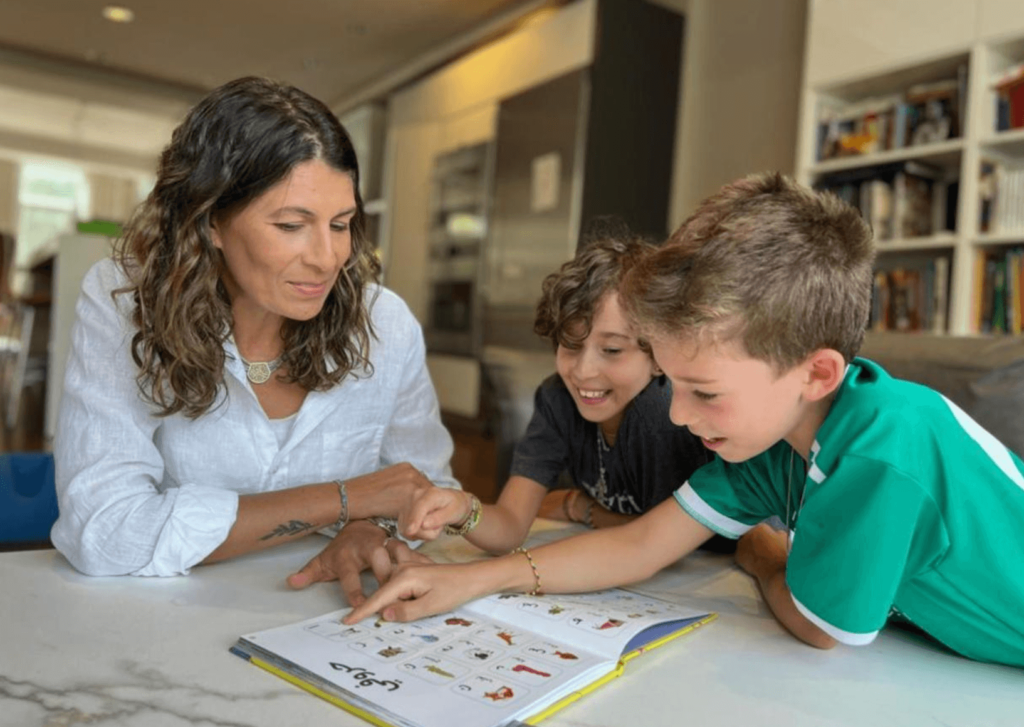
For children’s books in Egyptian Arabic, see the Tuta-Tuta project. This was started by Riham Shendy. I highly recommend this CBS News article about her experience to understand the way this diglossia situation plays out in the real world. Riham Shendy’s books are here. She recently highlighted for me her book Kalimat min Hayaty / Words from My Life:
Kalimat Min Hayaty is a very particular book for teachers who want to teach literacy and it is different from any other literacy books out there. It is a very “conversation-inviting” book that is designed as a mix of the famous German WimmelBooks and British Jolly Phonics (Finger Phonics) books. I would have not taught my kids literacy in Arabic had I not made that book, so to me it is the most critical of all my books.
Riham shendy, personal communication
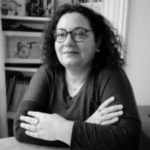
Another important resource for Arabic books for children and young adults is Hadi Badi, led by Miranda Beshara, pictured here. This international organization can help with curation of Arabic children’s books. Their website also includes a section about where to find/buy Arabic children’s books around the world. The website is mostly in Arabic at this time, but you can contact them with questions in English and other languages.
European public initiatives that provide lists of quality children’s books in Arabic include the Takam Tikou review in French and the international youth library in Munich.
In the United States, Dina Elabd is a children’s author who recently spoke to me about a cultural change: “Only in the past two decades has Arabic children’s literature evolved away from didactic, moral-based instruction” (personal communication). Dina has released eight books in English and Arabic.
Her passion for Arabic children’s literature led her to start Arabic Book a Month. Her company helps curate Arabic children’s book collections for schools and libraries, and has connections with authors, providing opportunities for arranging meetings and read-alouds, as well as virtual book fairs. You can view the books and related products for sale on the website. In terms of language variety, these books include Standard Arabic (formal, but with an increasing sensitivity to reaching children), Egyptian Arabic, and Levantine Arabic (see below for more on dialects other than Egyptian). The company warehouse is located in California.
For one of Dina’s Arabic Read-Alouds, see here:
For children who are Arabic heritage learners (growing up with Arabic at home in a society where another language, such as English, is dominant), Kalamna is a U.K.-based program that excels in Arabic classes and resources, including the Kalamna Phonics Toolkit. The kit contains books and flash cards that focus on simple words and pronunciation, with every word chosen to represent the informal registers that are spoken at home and feel familiar. You can read more about the creation of this kit here.
A recent Kalamna newsletter (Autumn 2023) stated:
we’re pleased to see a growing number of children’s books that work in both فصحى and عامية!
The Arabic terms here refer to the formal and informal registers of Arabic. It included an image of several books that fulfill this need.

There are a growing number of children’s books in dialects other than Egyptian as well, but they are not available as widely. For an overview of the Arabic language, see my earlier post here. At the end of it, I mention the four dialect families that are used to talk about dialects in Arabic: 1) Egyptian, 2) North African (Morocco, etc.), 3) Levantine (Palestine, Syria, Lebanon, Jordan), and 4) Gulf (Iraq, Yemen, Saudi Arabia, etc.). If you know you have interest in one or more dialects (other than Egyptian), this is something you could ask a Hadi-Badi curation assistant about.
For Lebanese dialect specifically, I can recommend the contributions of Sirine Demachkie (website here). So far, there are 3 great books and 1 matching game easily available from her website.
For translations of Arabic children’s literature into English, see the Arabic Kids Lit Now project.
For book recommendations related to the MENA/SWANA (Middle East North Africa/Southwest Asia and North Africa) region in English, see my past 10 for Libraries and Kids & YA Books.
Update April 2025
There’s a new book out for further reading: Children’s Picture Books and Contemporary Egyptian Society by Yasmine Motawy (AUC Press).
Thank you to those who contributed to this list of resources: Miranda Beshara, Hadi Badi | Dina Elabd, Arabic Book A Month | Yosra Koura, Kalamna | Riham Shendy, Tuta-Tuta
